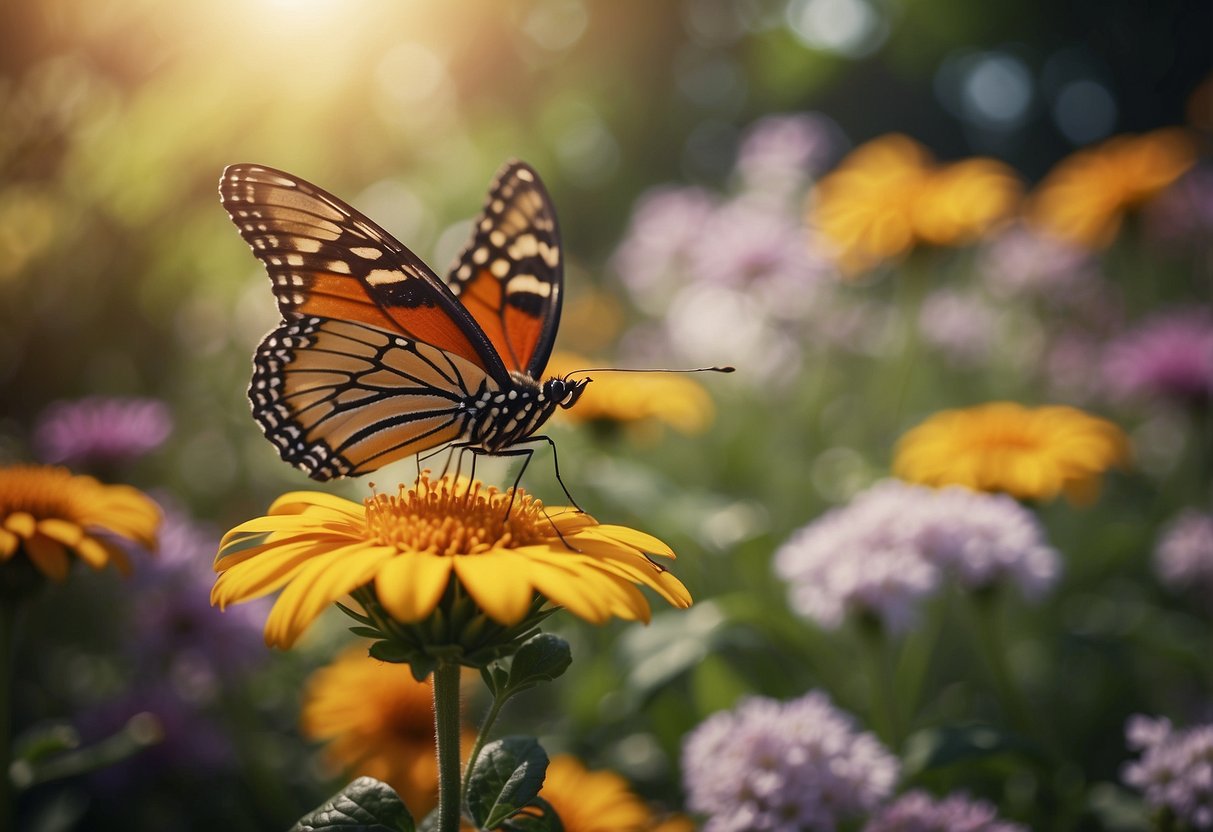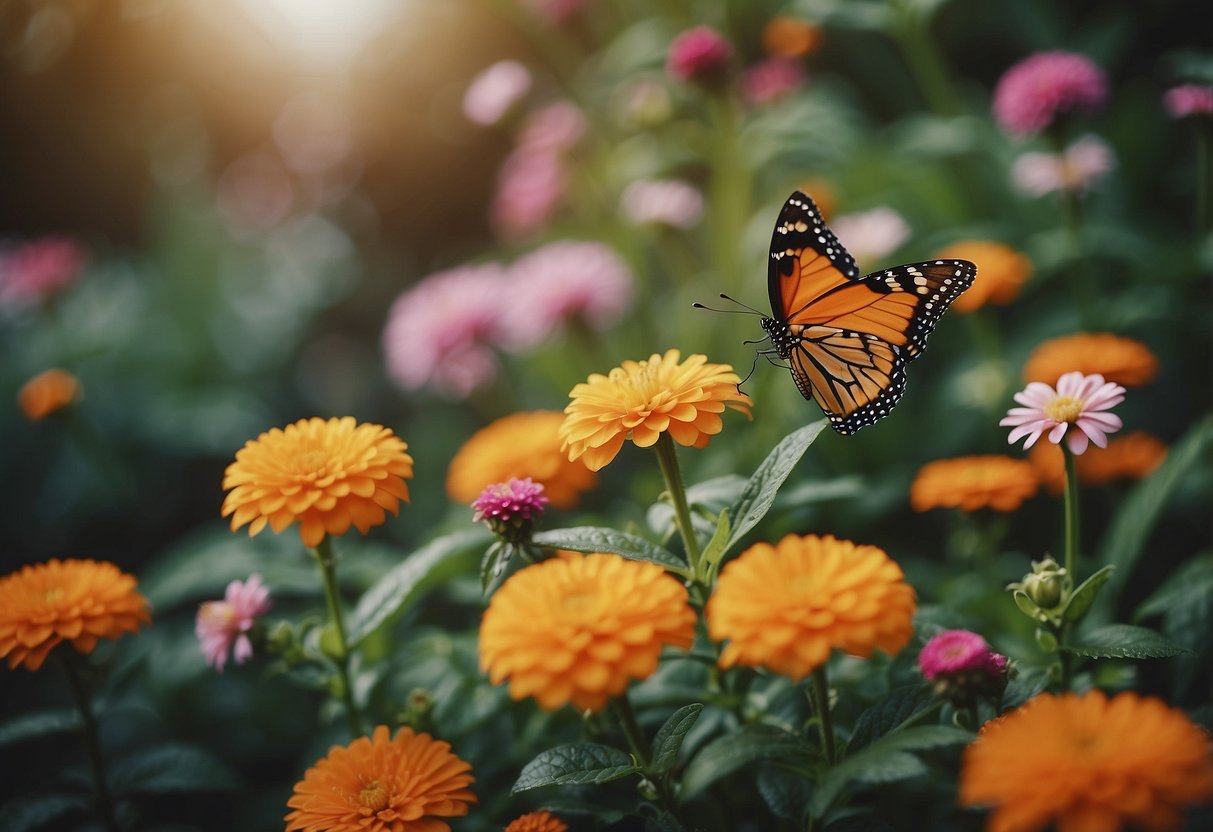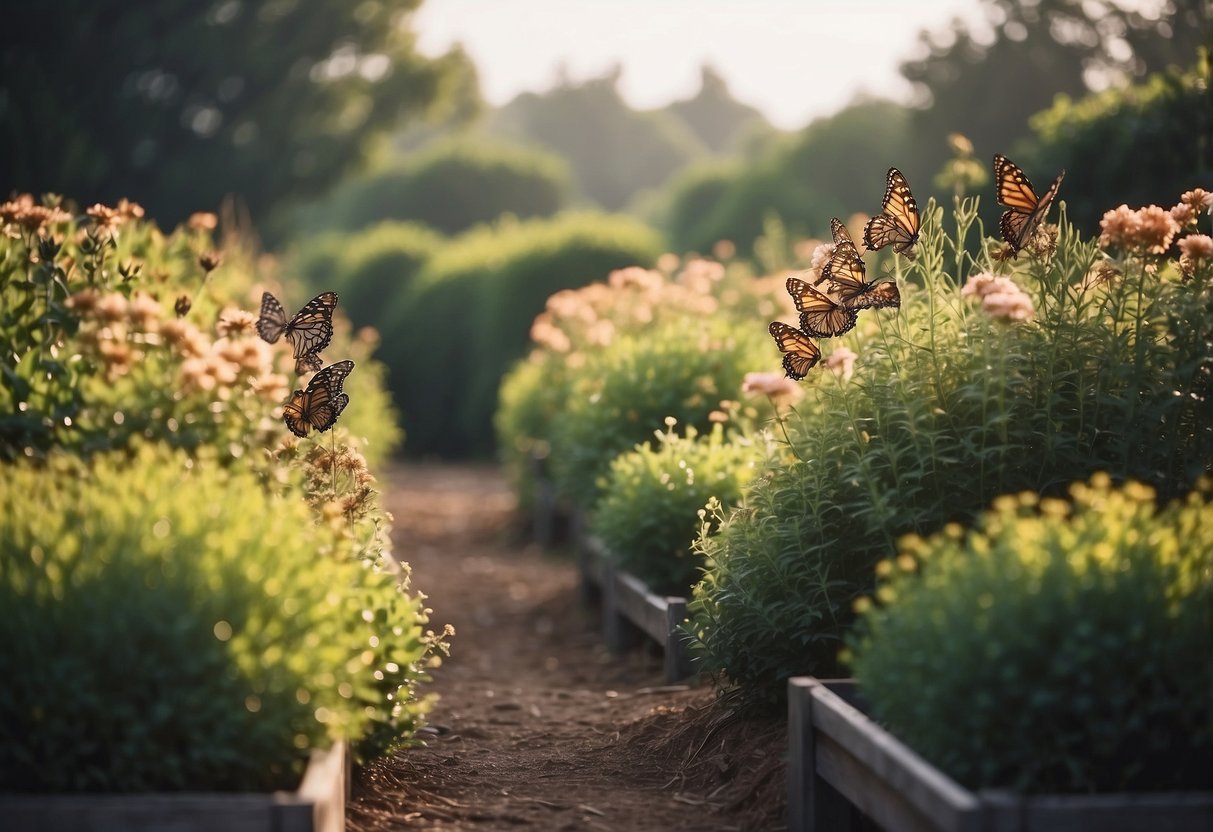Butterfly Garden Ideas: Create a Vibrant Oasis
Creating a butterfly garden is a rewarding way to attract beautiful butterflies to your yard while also supporting local ecosystems. This type of garden brings vibrant colors and fluttering wings, making it a delightful addition to any outdoor space. What plants and design elements will help you attract and support butterflies?

It’s easier than you might think to design a butterfly garden that thrives throughout the seasons. By using plants that provide nectar and serve as host plants for caterpillars, you can create a haven for these delicate pollinators. Your garden can become a sanctuary for both butterflies and other beneficial insects.
1) Plant Milkweed

Planting milkweed is essential if you want to create a butterfly garden that attracts monarchs. This plant is the primary food source for monarch larvae.
Most milkweed varieties thrive in full sun and well-drained soil. If you live in a hot climate, a bit of afternoon shade can help.
Space your milkweed plants about 18 inches apart to allow them room to grow. For larger varieties, like swamp milkweed, provide a bit more space.
By adding milkweed to your garden, you help sustain the monarch butterfly population while adding beauty to your outdoor space.
2) Provide a Water Source

Butterflies need water to survive and keep their bodily functions working. One easy way to help is by setting up a shallow birdbath with stones for them to perch on.
You can also create a puddling station by mixing sand and compost in a shallow dish and keeping it wet.
Keeping sponges damp in a shallow pan also offers a simple water source.
3) Create Sunlit Spots

Choose a sunny location in your yard. Butterflies need sun to stay warm and active. Most butterfly-friendly plants also require plenty of sunlight.
Make sure the spot gets at least 6 to 8 hours of direct sun each day. This helps the plants produce more nectar, which attracts more butterflies.
Providing a sunny, sheltered spot also helps butterflies bask and gather energy. Place flat stones or tiles where they can rest and soak up the sun.
4) Use Native Plants

Using native plants in your butterfly garden is key to attracting local butterflies. Native plants are adapted to your region’s climate and soil, making them easier to grow and maintain.
For example, False Indigo is a great choice for many regions and serves as a host plant for butterfly larvae.
Another excellent option is Yarrow, which thrives in full sun and adds beauty to your garden while providing nectar.
5) Include Nectar-Rich Flowers

Adding nectar-rich flowers to your butterfly garden is a great way to attract colorful visitors. Coneflowers and Lantana are top choices. These flowers provide plenty of nectar for butterflies.
Consider planting bee balm as well. Its tubular flowers are a favorite for many butterfly species. Butterfly bush is another excellent option as it’s known for its fragrant blooms.
Don’t forget about Tennessee Coneflower. It’s a prairie native and loved by Fritillary butterflies.
6) Add Puddling Stations

Puddling stations are perfect for attracting butterflies to your garden.
To make one, fill a shallow dish with sand or soil. Add some flat rocks for perching, then moisten the soil with water. Sprinkling a bit of salt on the surface can help too.
You can use things like bird baths, plant pots, or even terracotta saucers. Adding overripe fruit like bananas and oranges will make it even more attractive.
Keep the puddler’s soil moist, especially during hot days when butterflies are most active.
7) Avoid Pesticides

Pesticides can harm butterflies and other beneficial insects. Try to maintain your garden organically.
Use natural alternatives like soapy water to handle pests. Planting a variety of flowers attracts beneficial insects that prey on pests, reducing the need for chemicals.
Creating a healthy, diverse ecosystem helps your butterfly garden flourish without the use of harmful pesticides. Learn more tips at Epic Gardening.
8) Install Butterfly Houses

Placing butterfly houses in your garden can attract butterflies and provide them with a safe space. Choose a spot that is around four feet high on a post, fence, or tree. Make sure it’s sheltered from strong winds.
Butterflies like sunny areas, so place the house where it gets plenty of sunlight. Secure the house well to prevent it from swaying in the wind.
For more tips, you can check out this detailed guide on house placement and landscaping.
9) Plant in Clusters

Planting in clusters helps attract more butterflies to your garden. Large groups of the same flower are easier for butterflies to see and find.
Use nectar-rich plants like milkweed, lavender, and coneflowers. These plants provide essential food sources for butterflies.
Arranging flowers in clusters also creates a more visually appealing garden. It makes your garden look fuller and more vibrant.
10) Ensure Shelter from Wind

Your butterfly garden needs spots where butterflies can escape the wind. Plant dense shrubs or bushes. This creates a natural barrier against strong gusts.
Consider adding trellises or climbing structures. They provide extra cover and roosting spots. Use rocks, logs, or other garden elements to give butterflies hidden places to rest.
Creating these shelters helps butterflies stay safe and comfortable in your garden. For more detailed butterfly garden ideas, visit Planted Well’s guide.
How to Choose the Right Plants

Picking the best plants for your butterfly garden involves considering native vs. exotic options, flowering seasons, and the butterfly species you want to attract. Each of these aspects plays a crucial role in creating a thriving habitat.
Native Plants vs. Exotic Plants
Choosing between native and exotic plants can significantly affect your garden’s success. Native plants are adapted to your local soil and climate, making them easier to care for and requiring less water and fertilizer. They are also more likely to provide the right nectar and host resources for local butterfly species.
In contrast, exotic plants can add variety and beauty but may need more attention and resources to thrive. Be cautious, as some exotic plants may become invasive, disrupting local ecosystems.
Selecting mostly native plants with a few non-invasive exotic species can offer a balanced approach, attracting a wider range of butterflies while ensuring your garden remains sustainable and low-maintenance.
Seasonal Flowering Plants
To keep butterflies visiting your garden throughout the year, it’s essential to choose plants that bloom in different seasons. This ensures a continuous supply of nectar and other resources.
Spring bloomers like milkweed and lupine are great for attracting early butterflies emerging from hibernation. In the summer, plants like coneflower, liatris, and phlox provide abundant nectar.
For fall, consider planting goldenrod and asters, which offer late-season blooms that butterflies can rely on before migrating or preparing for winter. By planning for seasonal flowering, you’ll create a garden that supports butterflies year-round.
Attracting Specific Butterfly Species
If you have specific butterfly species in mind, tailor your plant selection to their preferences. Monarchs love milkweed, which serves as both a nectar source and a host plant for their larvae. Swallowtails are attracted to dill, fennel, and parsley for laying their eggs.
Painted Ladies prefer plants like hollyhocks and sunflowers. Research the butterflies native to your area and find out their preferred host and nectar plants. Creating a plant list based on these findings will help you attract and support the butterfly species you love.
By focusing on the right plants, you can create a vibrant and supportive butterfly garden that thrives with minimal effort.
Designing Your Butterfly Garden

Creating a butterfly garden involves careful planning to attract and support these beautiful insects. Focus on garden layout, providing necessary habitats, and including water features.
Garden Layout Tips
Butterflies are attracted to sunny spots because they need sunlight to warm their wings. Design your garden to have areas that get plenty of morning sun. Pavement, rocks, and exposed soil are good choices since they absorb heat.
Plant your flowers in drifts of 3-5 of the same kind. This makes it easier for butterflies to spot them. Drifts of bright colors can catch their attention quickly. Go organic by avoiding pesticides. This keeps butterflies and other beneficial insects safe.
Consider planting a variety of flowers that bloom at different times throughout the year. This ensures butterflies have a consistent food source. Include nectar plants like milkweed, coneflowers, and lantanas.
Creating Butterfly Habitats
Butterflies need more than just flowers. They also need places to lay their eggs and plants for their larvae to eat. Incorporate host plants like milkweed for monarch butterflies. These plants provide food for caterpillars and a place for female butterflies to lay eggs.
Create a mix of sheltered areas and open spaces. Butterflies can rest and hide from predators in sheltered spots. Use shrubs and small trees to provide these areas.
Avoid using non-native plants. While exotic plants may look beautiful, they often don’t support local butterfly species. Native plants are usually better at providing the necessary resources. For example, if you live in North America, plants like black-eyed Susans and asters are excellent choices.
Water Features and Their Benefits
Butterflies need water to drink. Simple water features are very effective. You can create a puddling area by filling a shallow dish with sand and water. This provides essential minerals as well.
Place the dish in a sunny spot. Butterflies prefer to drink from areas where they feel safe and warm. Small water fountains or birdbaths can also attract butterflies. Make sure the water is shallow or add stones for the butterflies to land on.
Don’t forget to change the water regularly to keep it fresh. Stagnant water can attract pests like mosquitoes. Keeping your garden clean and well-maintained will help butterflies thrive.







